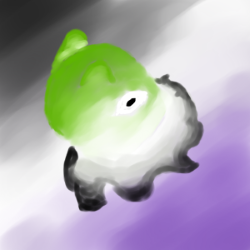 They stole what she loved most about herself. Now she’ll do anything to get it back.
They stole what she loved most about herself. Now she’ll do anything to get it back.
I have been waiting for this book for as long as its author, Brenda, has been my critique partner, friend, and editor. This is the first writing I’ve ever seen from her, and boy is the result worth your time.
This is one of my first review on the blog, and I guess it’s not entirely impartial. That’s okay. JOYTHIEF deserves all the love I’m about to shower down on it. And then I’m going to pull out one thing it does right, and talk craft. Are you ready?
First, the premise, shall we? JOYTHIEF revolves around a poison that steals what is most precious to yourself. How cool and terrifying is that? How many wildly different but intense story could we tell from it? Honestly, what would my character lose to the Joythief? makes an incredible character building question. Right there with what does my character fears the most?
For Mariq, this invaluable part of herself is her spider-thief skills. And here JOYTHIEF brings us not only a story full of intense adventure, magic, and intrigue, but also weaves in a deeper theme: how much of ourselves we tie to our skills. What part of our identity is connected to what we can do? Are we worth less if we lose them? And if we have horrible powers, does that make us a monster? What of men with skills, but no identity? Can they use their strengths to break free and build themselves?
JOYTHIEF has all you want in good fantasy: a thrilling storyline, powerful and dangerous magic, complex characters, and a powerful theme gluing it all together.
(Also it has Cendim, my Good Slytherin baby, whom I will always love. Every novel needs a Cendim!)
So what about the craft lesson, you say? Here it goes.
How to use details to build story arcs and character arcs
One of my favourite characterization trick is to give a character a very specific habit or like, and make sure to carry it through the novel. I find that human beings get unreasonably attached to doing or having certain things, especially once they become known for it. Or maybe it’s just me and squids. Either way, how we relate to this thing often reflects how we feel and it can be a great indicator of milestones in a character or story arc.
An example from Viral Airwaves is Henry’s noodles. Not only are they a constant source of humour, but they serve as a good indicator of his mood. When he doesn’t feel like eaten any halfway through the novel? That’s when you know he isn’t feeling great.
So where does Joythief come in? Remember how Mariq takes pride in her spider-thief skills? Well, she loves climbing. And much like your favourite Assassin’s Creed protagonist, she loves climbing to the highest buildings around. And she takes souvenir! So this novel opens with Mariq returning home with a tile of Kuriza’s highest tower’s roof–proof of her beloved skills. In itself, the tile is worthless, but it is very meaningful to her.
And it crops out throughout the entire novel. It’s her way of adopting new landscape, of reaffirming herself. She even marks a new friendship by bringing the other girl around for the tile-climb! If Mariq has to go to a high places, no matter what else is going on with the plot, she picks up a chunk of the roof. And guess what? When the story reaches its darkest moment, all seems doomed, and Joythief has stolen most of her skills, Mariq’s unique relationship with the tiles, proof of her abilities … let’s just say it’s not so good anymore, shall we?
So when you revise your novel, take a look at your characters’ habits and interests. Is there anything unique you could play with? How can you weave them into the storyline and highlight plot and character evolution with them? How does their meaning change with your characters? With your setting? (because you can totally do this with an important setting too!) Details like these are powerful tools. Don’t miss out on them!
